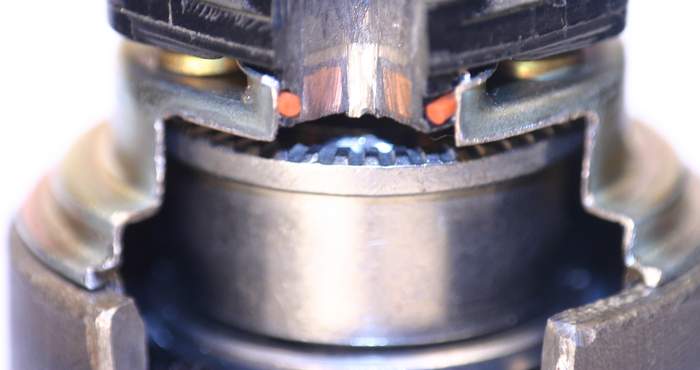
Vehicles: All ABS-equipped vehicles
Condition: Vehicle had wheel bearing hub replaced on one side.
Repair Procedure: If you diagnose a bad hub bearing on one side of a vehicle and the ABS wheel speed sensor or tone ring is integral to the bearing, you may need additional repairs to restore proper ABS functioning.
In many cases, replacing one hub bearing will cause the driver to feel ABS false activation when coming to a slow stop on dry pavement. False activation is usually described as a pulse in the brake pedal when not expected. The pulsation comes from the ABS valves cycling the supposedly locked up wheel. This is due to the difference in signal strength from the wheel speed sensors (WSS) side to side.
The problem is usually associated with the air gap difference or wiring and/or connector integrity. In many cases, removing the WSS from the other side, if possible, and cleaning the mounting surface may repair problem. The rust buildup actually lifts the WSS from the bearing, increasing the air gap and weakening the signal.
Another possible issue is play in the bearing causing sine wave frequency change and or AC voltage variation. The new bearing will have little to no play; the remaining hub has acceptable play, but can still affect signal strength. Again, the difference in signal from side to side may be enough to trigger false activation.
If WSS is integral and not serviceable, replacing the hub bearings in pairs may be the only answer. The ABS system is activating as designed, so no warning light will be illuminated in most cases. At least discuss this with customer to prevent unnecessary surprise repairs in the future and prevent the dreaded “It never did this before you worked on it” conversation.
Courtesy of Raybestos.













